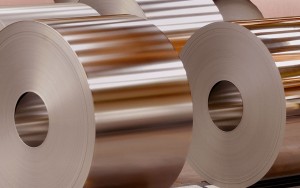Construction laminates
Main applications:
Construction: roofing, drainpipes and drains, various applications.
Specifications and sizes
- Cu DHP CW 024A
- Wire width: from 330 mm to 1250 mm.
- Standard size plates
- Thickness: 0.5mm – 0.6mm – 0.7mm – 0.8mm
Welded copper drainpipes and drains
Specifications and sizes
- Cu DHP
- Diameters: 60 – 75 – 76 – 80 – 87 – 100 – 120 mm
- Thickness: from 0.50 to 1.00 mm
- Length: 2,000 – 3,000 – 4,000 – 6,000 mm
Industrial laminates
Main applications:
Electrical/electronic: cable lugs, connectors, terminals, ferrules, contact instruments, relays, plugs, pins, power strips, terminal boards.
Automotive: car accessories, radiator trays, connectors, clamps.
Mechanical: shearing departments, small metal parts, connectors, household appliances, eyelets.
Transformers
Fashion: grommets, zippers, buttons, hooks, buckles
Other industries: bathroom accessories, hoses, washers, handles, chandeliers, profiles, gold-beaters, medals, cups, beaded chains.
Specifications and sizes
- Cu ETP CW004A
- Cu OF CW008A
- Physical state: annealed, raw and extra raw.
- Wires/Strips
- Plates
- Available thicknesses: from 0.20 to 3.00 mm
(customised dimensions available on request)
- Wire and strip shearing (width: from 6 to 1100 mm.)
- Discs with Ø from 65 to 1000 mm
(Plates and squared bars with customised dimensions available on request)


